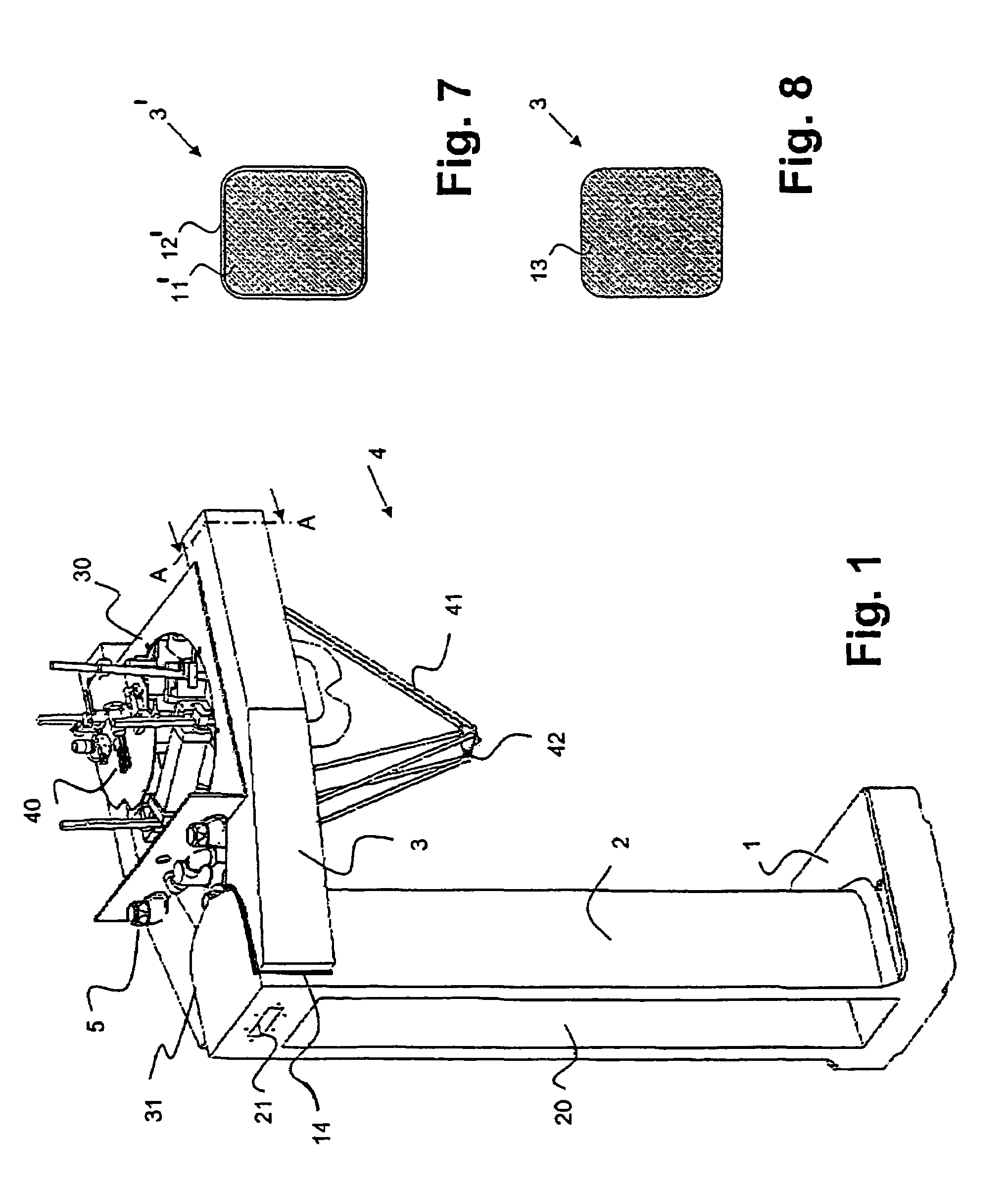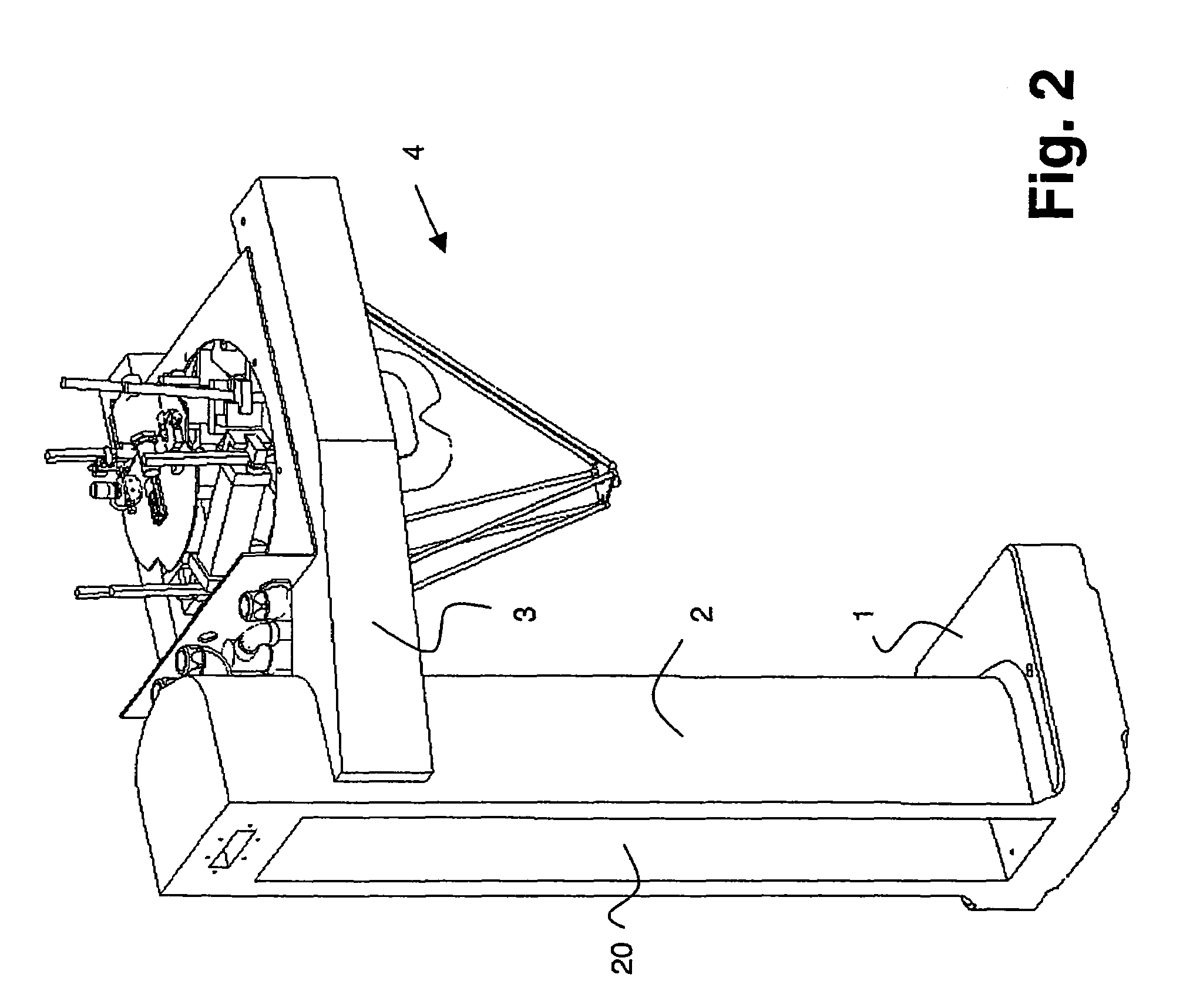Device for carrying and fastening a robot
a technology for fastening devices and robots, applied in mechanical control devices, process and machine control, instruments, etc., can solve the problems of individual robots not being able to be set up in any desired arrangement, relatively expensive carrier devices, and steel material requirements, and achieve good vibration-damping properties
- Summary
- Abstract
- Description
- Claims
- Application Information
AI Technical Summary
Benefits of technology
Problems solved by technology
Method used
Image
Examples
first embodiment
[0022]a device according to the invention is shown in FIG. 1. The device is designed in a gallows shape and has three components: a bottom horizontal component, a vertical component and a top essentially horizontal component. These components are formed in this sequence by a foot 1, a column 2 adjoining the foot 1 and at least one cantilever arm 3. The cantilever arm 3 preferably extends in an exactly horizontal direction. However, it is also possible for it not to form a right angle to the column 2. The foot 1 preferably extends in the same direction as the at least one cantilever arm 3, but is normally designed to be shorter. The foot 1 and / or the at least one cantilever arm preferably do not project on the opposite side of the column 2.
[0023]The foot 1 and column 2 are preferably made together in one piece, as shown here. However, they can also be composed of two or more parts. The at least one cantilever arm 3 is fastened to the column 2 in a fixed position. It is preferably fas...
third embodiment
[0030]At least part of the device consists of a composite material. The column 2 and the foot 1 preferably consist entirely of a composite material. The cantilever arms 3, in a first variant (FIG. 8), are likewise produced entirely from a composite material and therefore form a solid body 13. In a second variant (FIG. 7), cantilever arms 3′ have a core 11′ consisting of a composite material and an outer envelope 12′ consisting of another material, in particular high-grade steel. In a third embodiment, cantilever arms are designed to be hollow on the inside, so that lines for the robot 4 can be passed through. In this case, the hollow body preferably consists of a composite material, in particular a cast mineral.
[0031]A suitable composite material is in particular a cast mineral. This composite material normally comprises essentially about 90-93% of minerals and stones and 7-10% of epoxy resin. Cast mineral is known in mechanical engineering. The preparation varies depending on the t...
PUM
 Login to View More
Login to View More Abstract
Description
Claims
Application Information
 Login to View More
Login to View More - R&D
- Intellectual Property
- Life Sciences
- Materials
- Tech Scout
- Unparalleled Data Quality
- Higher Quality Content
- 60% Fewer Hallucinations
Browse by: Latest US Patents, China's latest patents, Technical Efficacy Thesaurus, Application Domain, Technology Topic, Popular Technical Reports.
© 2025 PatSnap. All rights reserved.Legal|Privacy policy|Modern Slavery Act Transparency Statement|Sitemap|About US| Contact US: help@patsnap.com



